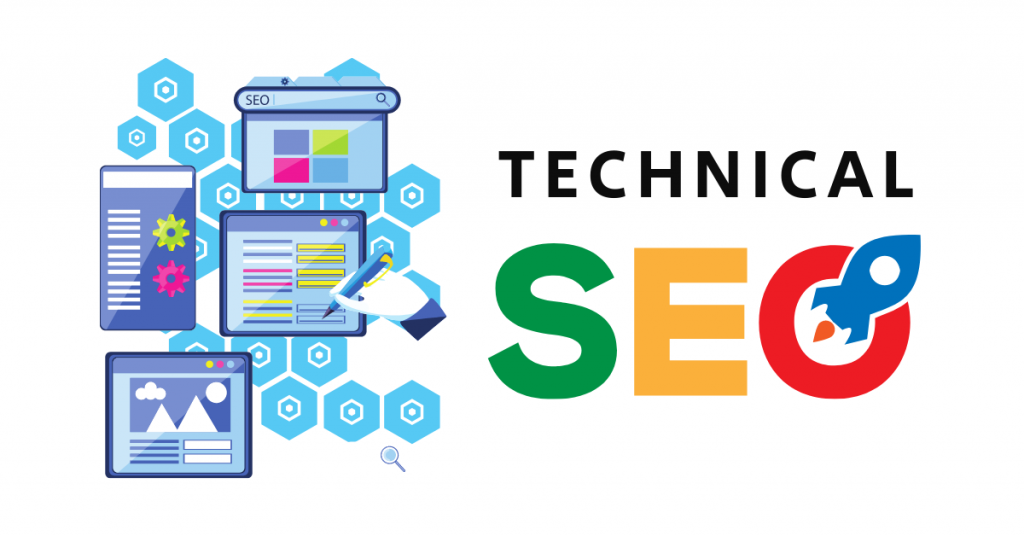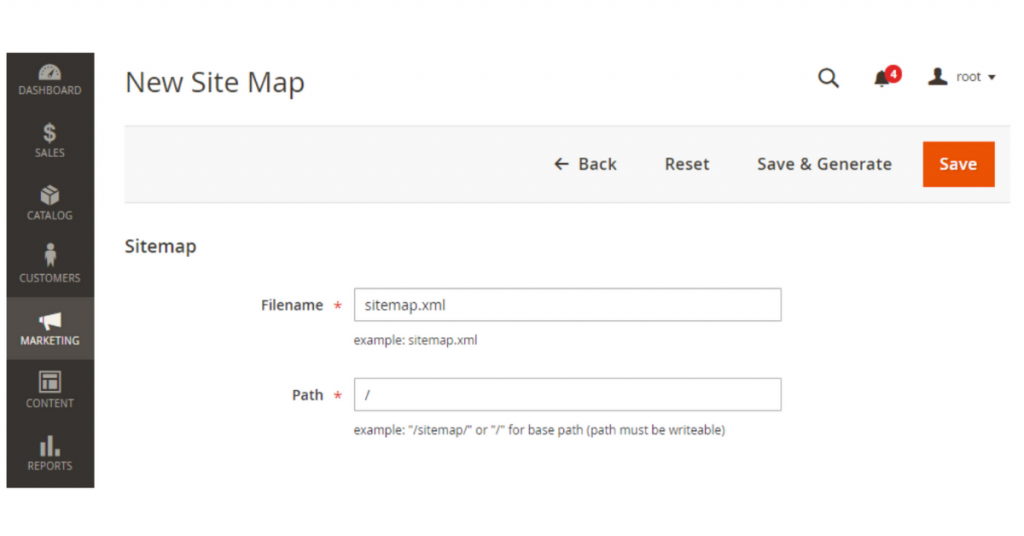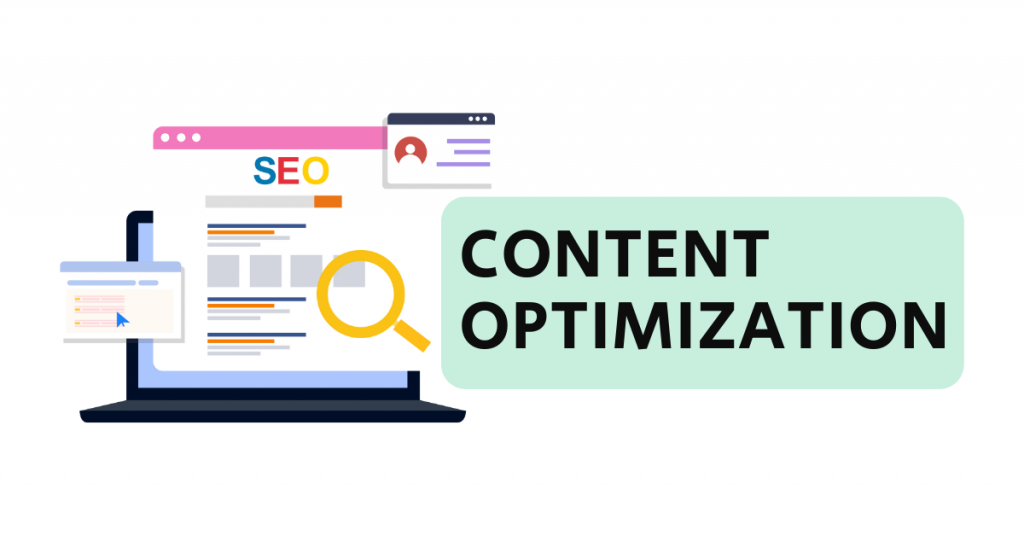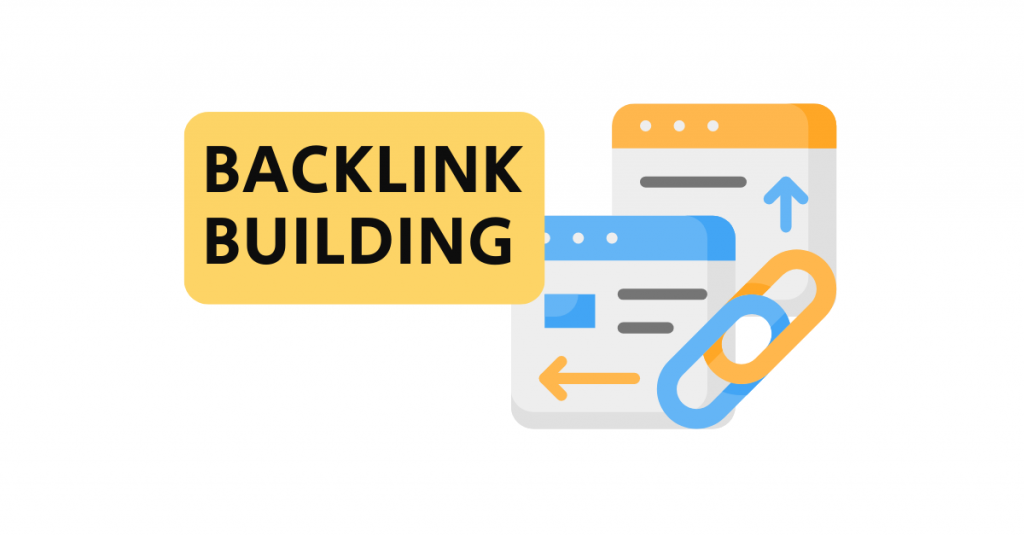When it comes to search engine optimization (SEO), Magento offers a myriad of opportunities for online store owners to maximize their visibility on major search engines. This blog post will guide you through the intricate labyrinth of Magento SEO, showcasing strategies and techniques on how to improve SEO on Magento, ultimately helping improve your store’s rankings, traffic, and conversions.
Join us as we delve into the key areas that play a pivotal role in improving SEO on Magento, from site structure and URL optimization to metadata and mobile responsiveness. We will also explore technical SEO aspects such as canonical link meta tags, XML sitemap generation, and robots.txt configuration, and website speed optimization. Moreover, we will delve into the world of Magento extensions and tools that can aid in enhancing your store’s SEO performance. Finally, we will discuss various content strategies and the importance of backlinks in bolstering your Magento SEO.
Overview
- Optimize Magento SEO with essential factors such as site structure, URL optimization, metadata, and mobile responsiveness.
- Leverage extensions and tools like rich snippets and microdata to improve click-through rates as well as drive more traffic.
- Build backlinks through content marketing strategies for stronger SEO performance.
Essential Magento SEO Factors to consider

It’s no secret that SEO plays a significant role in driving organic traffic and boosting sales for Magento 2 stores. However, the art of SEO is like painting a masterpiece. There are many elements that must harmoniously work together to create a perfect picture. In the world of Magento SEO, these elements include:
- Site structure
- URL optimization
- Metadata
- Mobile responsiveness
A well-structured site that is easily navigable not only enhances user experience but also helps search engine crawlers understand your content more effectively. Some key elements to consider for optimizing your site include:
- URL optimization: Create URLs that are succinct, descriptive, and keyword-rich—making it easier for search engines to crawl and index your site.
- Metadata: Pay attention to title tags and meta descriptions, as they play a pivotal role in determining how your site appears in search engine results, influencing click-through rates and rankings.
- Mobile-friendliness: With the upsurge in mobile usage, ensuring your site is mobile-friendly is a must.
By implementing these optimization strategies, you can improve your site’s visibility and attract more organic traffic.
While these factors are crucial in their own right, it’s also important to remember that SEO is an ongoing process. It requires regular tweaks and adjustments based on performance metrics and changing search engine algorithms. So let’s dive deeper into each of these elements and learn how to optimize them for maximum SEO performance.
Site Structure
Just as a well-constructed building stands tall amidst a cityscape, a well-structured site layout is essential for both users and search engines. It not only enhances the user experience, but also allows search engines to understand your content more effectively. In other words, a well-planned site structure is like a roadmap that guides visitors and search engines through your website.
One essential aspect of a well-structured site layout is the avoidance of duplicate content. Duplicate content can create confusion for search engines and can potentially lead to lower rankings. To avoid this, it’s recommended to enable canonical tags in addition to category paths. This ensures that a product is accessible from all its assigned categories without any SEO conflicts.
Another key aspect of a well-structured site layout is the use of HTML sitemaps. For larger stores, it’s recommended to generate multiple HTML sitemaps. These sitemaps can cover sub-categories and list the most crucial products, making it easier for search engines to crawl and index your content. Remember, a well-structured site layout is not just about aesthetics, it’s also about SEO performance.
URL optimization
In the world of SEO, URLs are more than just web addresses; they are a crucial part of your site’s identity. They tell search engines and users what your pages are about. Therefore, URL optimization is key to improving your site’s visibility on search engines. The most effective way to optimize your URLs is by making them short, descriptive, and keyword-rich. This provides Google crawlers with an understanding of your website’s content while also making your URLs more user-friendly.
Moreover, it’s not recommended to include category paths in product URLs for SEO purposes. This can lead to duplicate content issues and can confuse search engines. Instead, consider using SEO-friendly URLs that are easy to read and understand, and implement a category URL suffix to optimize your website’s structure.
Lastly, it’s important to remember that changing URLs can have an impact on your site’s SEO. When you change a URL, make sure to create permanent redirect configurations to prevent 404 error pages and preserve your search engine rankings. By giving careful thought to your URL structure and making it as clear and concise as possible, you can significantly improve your site’s SEO performance.
Metadata and tags
Metadata and tags are like the invisible threads that weave the fabric of your website’s SEO. They provide search engines with valuable information about your website’s content, helping them better understand and rank your pages. In the realm of Magento SEO, this includes title tags, meta descriptions, and meta keywords.
Title tags are one of the most important elements of on-page SEO. They tell search engines what your page is about and are displayed as the clickable headline in search engine results. A well-crafted title tag can improve your site’s visibility and attract more clicks from search engine users. Similarly, meta descriptions provide a brief summary of your page and appear under the title tag in search engine results. A compelling meta description can entice users to click on your site and improve your click-through rate.
Meta keywords, on the other hand, were once a major factor in SEO but are no longer considered important by most major search engines, including Google. However, they can still be useful for other search engines, so it’s a good idea to include them in your metadata.
Remember, metadata and tags may be invisible to users, but they’re crucially visible to search engines. So, make sure they’re optimized for the best SEO results.
Mobile responsiveness
In today’s digital age, mobile devices have become an integral part of our lives. This shift towards mobile has also impacted the way we shop online. More and more people are using their mobile devices to browse and shop online, making mobile responsiveness a crucial factor in Magento SEO. A mobile-friendly Magento store not only enhances the shopping experience for mobile users, but also improves your site’s ranking in mobile search results. This is because search engines, like Google, use mobile-friendliness as a ranking factor in their algorithms. So, if your Magento store isn’t mobile-friendly, you could be missing out on a significant amount of traffic and sales.
Additionally, image optimization plays a crucial role in mobile responsiveness. Bulky websites perform inadequately and compressing images can accelerate your Magento 2 store. By optimizing your images, you can reduce your page load times, improve user experience, and boost your SEO performance. So, make sure your Magento store is mobile-friendly and optimized for speed to stay ahead of the competition.
Optimizing Magento technical SEO

While the visible elements of SEO, such as content and site structure, are crucial, it’s also important not to overlook the technical aspects of SEO. Technical SEO refers to the processes and tactics used to optimize a website for crawling, indexing, and performance. In the context of Magento, this includes aspects such as:
- Canonical link meta tags
- XML sitemap generation
- Robots.txt configuration
- Website speed optimization
A canonical link meta tag can help you avoid duplicate content issues by telling search engines which version of a page is the original or preferred one. XML sitemap generation, on the other hand, helps search engines understand your website structure and discover new content. Robots.txt configuration controls how search engine robots crawl and index your website, while website speed optimization improves user experience and search engine rankings.
By optimizing these technical SEO aspects, you can create a strong foundation for your Magento store’s SEO. This can help you achieve better visibility on search engines, attract more organic traffic, and ultimately, boost your online sales. So let’s delve deeper into each of these technical SEO optimizations and learn how to apply them to your Magento store.
Canonical link meta tag
In the world of SEO, duplicate content is a common issue that can confuse search engines and negatively impact your site’s rankings. This is where canonical link meta tags come in. Canonical tags tell search engines which version of a page is the original or preferred one, helping you avoid duplicate content issues.
Magento provides an easy way to enable canonical tags for product and category pages. This allows the search engine bots to better understand the structure of your store. This ensures that even if a product is accessible from multiple categories, search engines will consider only one version of the page. By using canonical tags, you can prevent duplicate content issues, improve your search engine rankings, and ensure that your SEO efforts are focused on the right pages.
However, it’s important to remember that canonical tags are just one part of a larger SEO puzzle. They should be used in conjunction with other SEO best practices, such as creating unique and high-quality content, optimizing your site structure, and building high-quality backlinks. With these combined strategies, you can create a robust SEO strategy that drives traffic and boosts your online sales.
XML sitemap generation

An XML sitemap is like a roadmap of your website that helps search engines navigate your content. It lists all the pages on your site, allowing search engines to discover and index new content more efficiently. In other words, an XML sitemap makes it easier for search engines to crawl your site, improving your visibility and rankings on search engine results pages.
In Magento, you can generate an XML sitemap by following these steps:
- Navigate to the Marketing > Site Map section in your admin panel.
- Configure various settings, such as the frequency of updates, the priority of different types of content, and whether to include images in your sitemap.
- Remember, an XML sitemap is not a one-time setup. It needs to be updated regularly to reflect any changes to your site’s content.
Having an XML sitemap can significantly improve your Magento store’s SEO performance. It not only helps search engines understand your site structure but also ensures that all your pages are crawled and indexed. So, make sure to generate an XML sitemap for your Magento store and keep it up-to-date to maximize your SEO results.
Robots.txt configuration
Robots.txt is a simple txt file that tells search engine robots which pages on your site they can crawl and index, and which they should ignore. It’s like a doorman that controls access to certain parts of your website. Proper configuration of your robots.The txt file is crucial to ensure that search engines are crawling and indexing your site correctly.
In Magento, you can configure your robots.txt file by following these steps:
- Navigate to the Content > Design > Configuration section in your admin panel.
- Specify which user-agents (search engine robots) are allowed to crawl your site.
- Specify which directories or files they can or cannot access.
Remember, a wrongly configured robot.txt file can prevent search engines from crawling and indexing your site, negatively impacting your SEO performance.
By properly configuring your robots.txt file, you can control how search engines interact with your site. This can help improve your site’s visibility on search engine results pages, drive more organic traffic to your site, and ultimately, boost your online sales. So don’t overlook the importance of your robots.txt file in your Magento SEO strategy.
Website speed optimization
In the fast-paced world of the internet, speed matters. A slow-loading website can frustrate users, leading to higher bounce rates and lower conversion rates. Moreover, website speed is also a ranking factor for search engines like Google. Therefore, optimizing your website’s speed is crucial for both user experience and SEO.
In Magento, you can optimize your website’s speed by:
- Reducing the number of HTTP requests
- Optimizing image sizes
- Employing a content delivery network (CDN)
- Limiting render-blocking scripts
- Optimizing caching
- Selecting an appropriate hosting service plan
By implementing these strategies, you can reduce your page load times, improve your site’s performance, and enhance your SEO results.
Remember, a fast-loading website not only enhances user experience but also improves your search engine rankings. So, make sure to invest time and effort into optimizing your website’s speed. After all, in the world of SEO, every second counts!
Leveraging Magento extensions and tools for SEO

Just like a handyman needs the right tools to get the job done, an online store owner needs the right extensions and tools to optimize their store’s SEO. Magento offers a wide range of extensions and tools that can help you enhance your store’s SEO performance. Some of these tools include:
- All-in-one SEO extensions
- Image optimization tools
- Keyword research tools
- SEO analytics tools
- XML sitemap generators
With these tools, you can improve your store’s search engine rankings, drive more organic traffic, and increase your online visibility.
Magento extensions and tools can help you streamline your search engine optimization efforts and achieve better results. For instance, SEO all-in-one extensions provide a comprehensive range of SEO features, including keyword optimization, meta tag management, sitemap generation, and rich snippets. Image optimization tools, on the other hand, can help you optimize your images for faster loading times, improving user experience and SEO performance.
By leveraging these Magento extensions and tools, you can optimize your Magento 2 SEO performance more efficiently and effectively. Remember, SEO is a long-term game. It requires continuous effort and the right tools to achieve sustainable results. So, make sure to equip your Magento store with the right SEO tools and extensions.
SEO all-in-one extensions
SEO all-in-one extensions are comprehensive SEO solutions that provide a wide range of SEO features in one package. These extensions can help you optimize various aspects of your Magento store’s SEO, including:
- Keyword optimization
- Meta tag management
- Sitemap generation
- Rich snippets
These extensions offer a one-stop solution for all your SEO needs. Instead of installing multiple extensions for different SEO tasks, you can use an all-in-one SEO extension to manage all your SEO efforts from one place. This not only saves you time, but also ensures that all your SEO efforts are aligned and coordinated.
There are several SEO all-in-one extensions available for Magento, such as Yoast SEO, All in One SEO Pack, and Magento SEO Suite. These extensions offer a variety of features and can be tailored to the specific needs and budgets of online merchants. So, whether you’re a small business owner or a large enterprise, there’s an all-in-one SEO extension that can help you optimize your Magento store’s SEO performance.
Rich snippets and microdata
Rich snippets and microdata are powerful SEO tools that can enhance your search results listings and improve click-through rates.
Rich snippets are additional details that appear in search engine results, such as:
- Product price
- Reviews
- Rating
- Name
- SKU
Microdata, on the other hand, is a type of metadata that provides search engines with more information about the content of your pages.
Implementing rich snippets and microdata can make your search result listings more informative and attractive to users. For instance, a product listing with rich snippets can show the product’s price, reviews, and rating right in the search results, giving users more information about the product before they even click on the link. This can increase your click-through rates and drive more traffic to your site.
There are several tools and extensions available for Magento that can help you implement rich snippets and microdata. By using these tools, you can enhance your search result listings, improve user experience, and boost your SEO performance. So don’t overlook the power of rich snippets and microdata in your Magento SEO strategy.
Image optimization tools
Images play a crucial role in eCommerce. They help users understand your products and can significantly impact their purchase decisions. However, large, unoptimized images can slow down your site and negatively impact your SEO performance. That’s where image optimization tools come in. Some popular image optimization tools include:
- TinyPNG
- JPEGmini
- ImageOptim
- Kraken.io
Using these tools can help you reduce the file size of your images without sacrificing quality, resulting in faster loading times and improved SEO performance.
Image optimization tools can help you reduce the size of your images without compromising their quality. By compressing your images, you can reduce your page load times, improve user experience, and boost your SEO performance. In addition, optimized images are more likely to appear in Google image search results, driving additional traffic to your site.
There are several image optimization tools available for Magento, such as TinyPNG, Smush, and Kraken.io. These tools can automatically compress your images when you upload them to your site, saving you time and effort. By optimizing your images, you can make your Magento store faster, more user-friendly, and more SEO-friendly.
Content strategies for boosting Magento SEO

Content is the heart of SEO. It’s what search engines crawl and index, and it’s what users come to your site to see. Therefore, creating valuable content is crucial for boosting your Magento store’s SEO performance. In this section, we’ll explore three main content strategies: blogging, product descriptions, and FAQ sections.
Blogging is a powerful tool for SEO. By regularly publishing high-quality, keyword-rich blog posts, you can target more keywords, drive more traffic to your site, and establish your brand as an authority in your industry. Product descriptions, on the other hand, are crucial for eCommerce SEO. Unique, engaging, and keyword-optimized product descriptions can improve your product page rankings and enhance user experience. Lastly, FAQ sections can enhance your site’s search engine visibility by providing new and updated content that is informative and beneficial to users.
By implementing these content strategies, you can create valuable content that attracts and engages your target audience, drives more organic traffic to your site, and improves your search engine rankings. So let’s delve deeper into each of these content strategies and learn how to implement them in your Magento store.
Blogging for SEO
Blogging is one of the most effective ways to create valuable content for your Magento store. By regularly publishing high-quality, keyword-rich blog posts, you can target more keywords, drive more traffic to your site, and establish your brand as an authority in your industry.
However, not all blog posts are created equal. To optimize your blog posts for SEO, you need to focus on:
- Creating content that is valuable, engaging, and keyword-optimized
- Understanding your audience and researching relevant keywords
- Crafting compelling content that answers your audience’s questions and solves their problems
- Optimizing your blog post titles, meta descriptions, and URLs for SEO
While Magento doesn’t offer a default blogging feature, there are several blogging extensions available for Magento, such as Magento Blog, Blog Pro, and Blog Extension by Aheadworks. These extensions can help you easily manage your blog posts, categories, and tags, and optimize your blog for SEO.
By integrating blogging into your Magento SEO strategy, you can create valuable content that drives traffic, builds trust, and boosts your SEO performance.
Product descriptions
Product descriptions play a crucial role in eCommerce SEO. They provide users with important information about your products and can significantly impact their purchase decisions. However, not all product descriptions are created equal. To boost your SEO performance and user experience, you need to create unique, engaging, and keyword-optimized product descriptions.
A good product description should:
- Be more than just a list of features
- Tell a story
- Highlight the benefits of your product
- Engage your audience’s emotions
- Be easy to read
- Be concise
- Include relevant keywords to improve your product page rankings
Remember, your product descriptions are not just for search engines; they’re also for your customers. So, make sure they’re informative, persuasive, and drive your customers to take action.
Magento offers various features and tools that can help you optimize your product descriptions for SEO. Some of these include:
- Using the Magento SEO Suite extension to manage your meta tags, keywords, and sitemap, and optimize your product URLs
- Creating unique and engaging product descriptions to improve your SEO performance
- Enhancing user experience to boost your online sales
By utilizing these features and tools, you can effectively optimize your product descriptions for SEO and achieve better results for your online store.
FAQ sections
FAQ sections can enhance a website’s search engine visibility and ranking by furnishing new and updated content that is informative and beneficial to customers. Whether it’s about your products, delivery options, or return policies, an FAQ section can provide quick and easy answers to your customers’ most common questions.
To optimize your FAQ sections for SEO, follow these steps:
- Use clear and concise questions and answers.
- Organize them into categories.
- Update them regularly.
- Include a search bar to make it easy for users to find the information they’re looking for.
Remember, an FAQ section is not just a place to answer questions; it’s also a powerful tool to improve your SEO performance and user experience.
There are several Magento extensions available that can help you create and manage your FAQ sections, such as FAQ Extension by Magentoplaza, FAQ by Aheadworks, and Product Questions by Magento. By implementing an SEO-friendly FAQ section, you can provide valuable content to your users, answer their questions, and improve your search engine rankings. So, make sure to include an FAQ section in your Magento SEO strategy.
Building backlinks and strengthening Magento SEO

Backlinks, also known as inbound links, are links from other websites that point to your website. They are like votes of confidence from other websites, signaling to search engines that your content is valuable and trustworthy. In the realm of SEO, backlinks are one of the most important factors that influence your site’s rankings.
Building a strong backlink profile can significantly boost your Magento store’s SEO performance. High-quality backlinks from reputable websites can increase your site’s popularity, trustworthiness, and overall SEO performance. However, not all backlinks are created equal. It’s important to focus on quality over quantity. Backlinks from these types of websites are largely ineffective when it comes to improving your website’s SEO. In fact, they may impede your SEO performance.
There are several ways to build high-quality backlinks, such as guest blogging, content marketing, and social media marketing. In addition, there are also several Magento extensions available that can help you manage your backlinks and optimize your link building efforts. By developing a strong backlink strategy, you can increase your website’s visibility, drive more organic traffic, and strengthen your Magento SEO.
Summary
Magento SEO is a multifaceted endeavor that involves a variety of strategies and techniques. From optimizing your site structure and URLs, to configuring your metadata and ensuring mobile responsiveness, each element plays a crucial role in improving your Magento store’s SEO. Furthermore, technical SEO aspects such as canonical link meta tags, XML sitemap generation, and robots.txt configuration, and website speed optimization are essential for achieving higher visibility on search engines.
Moreover, leveraging Magento extensions and tools can significantly enhance your store’s SEO performance, while implementing valuable content strategies and building high-quality backlinks can drive more organic traffic to your site. Ultimately, Magento SEO is about creating a user-friendly website that provides valuable content and a great shopping experience. By adhering to these Magento SEO strategies and best practices, you can boost your online visibility, attract more organic traffic, and propel your business to new heights. So, why wait? Start optimizing your Magento store for SEO today and see the difference it can make for your business!
Ready to optimize your Magento platform for better SEO performance in 2023? Let scandiweb guide you step by step, crafting a strategy tailored to your unique needs. Contact us today, and together let’s create a strategic plan that drives your eCommerce growth.
Frequently Asked Questions
How to do SEO on Magento?
To optimize your Magento 2 store for SEO, enable the SEO module from Magento’s admin panel, enable SEO-friendly URLs and use page titles and meta descriptions.
You should also generate a sitemap and monitor your Magento site with Google Webmaster and Analytics tools.
How do I optimize my SEO?
To optimize SEO, do keyword research and use relevant terms, create quality content targeting those keywords, publish authoritative content regularly, use meta tags, gain referrals from other websites, and stay up to date on the latest SEO techniques.
Keyword research is the first step in optimizing SEO. Identify relevant terms and phrases that are related to your content and use them in your text. Quality content is essential for SEO success. Create content that is targeted to the keywords you have identified and make sure it is authoritative and engaging.
What is SEO in Magento?
Search engine optimization (SEO) is an important factor for any eCommerce business, including Magento. To optimize their websites for SEO, users should apply both on-page and off-page techniques. With the right steps, Magento users can maximize their chances of achieving successful search engine rankings.
What is a canonical link meta tag?
Canonical link meta tags help identify the original or preferred version of a page, preventing duplication issues for search engines.
Search engines use canonical link meta tags to determine which version of a page should be indexed and displayed in search results. This helps ensure that the most relevant version of a page is displayed, and that duplicate content is not displayed.
What is the significance of image optimization tools in Magento SEO?
Image optimization tools in Magento SEO can significantly improve loading speed, which in turn can boost a website’s SEO performance.
By using these tools, website owners can ensure that their images are optimized for the web, reducing loading times and improving the overall user experience. This can have a positive impact on SEO performance, as faster loading can have a positive impact on SEO performance.



Share on: